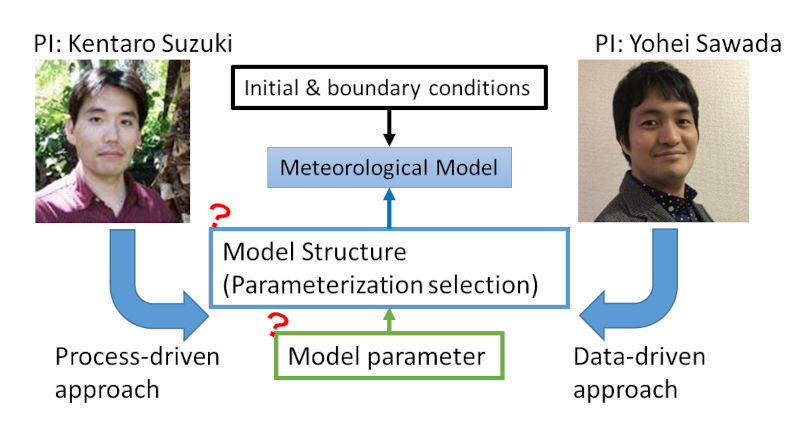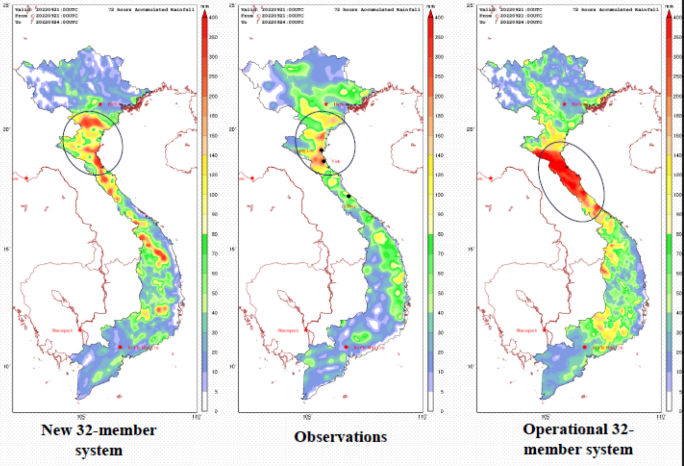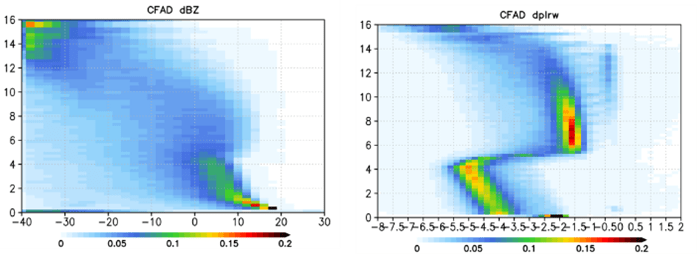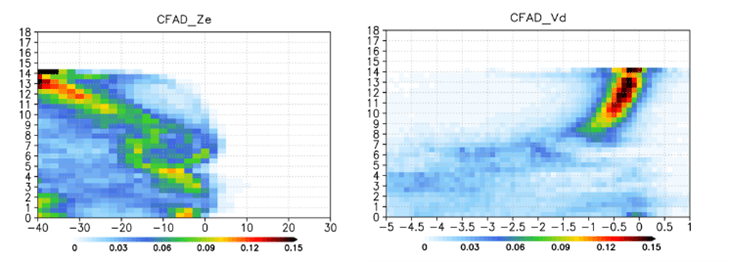Progress Report
Control Theory of Weather-Society Coupling Systems for Supporting Social Decision-Making[A-2] Uncertainty quantification for meteorological control
Progress until FY2024
1. Outline of the project
- Background:
- Research on weather control should rely on computer simulations until the safety of new intervention methods is thoroughly assessed. However, meteorological simulations inherently have uncertainties in their various modules, making it challenging to fully trust the simulation results of weather control.
- Objective:
- We will pinpoint all potential sources of uncertainties in meteorological simulations and minimize them using observation data. Then, we will quantify the residual uncertainties contributing the accurate assessment of weather control techniques.
- Method:
- We will conduct many simulations with various settings and analyze them alongside observational data using machine learning. This enables us to quantify the uncertainties of meteorological models, which have not been identified by their developers (data-driven approach). We will also comprehend the mechanisms contributing to these uncertainties (process-driven approach) (Fig.1).

2. Outcome so far
① [Data-driven approach] We confirmed that our method can be applied to realistic atmospheric simulation. Using this method, we successfully improve the skill to predict severe rainfall and tropical cyclone and accurately quantify their uncertainties (Fig. 2). We applied this method to improve operational weather forecast in Vietnam and toward impact-based forecasting in which real disaster risk is explicitly estimated. In addition, we developed Ensemble Kalman Control, which effectively used the uncertainties in simulation and realized meteorological control, and explored the controllability of tropical cyclones.

② [Process-driven approach] Cooperating with the other R&D Items, we are analyzing various large ensemble simulation data (Fig. 3). Focusing on precipitation processes, we are developing the method to interpret the uncertainties estimated by the data-driven method.


3. Future plans
The R&D of uncertainty quantification method has been completed, and the effectiveness of it has been thoroughly evaluated in the atmospheric prediction. We are working to apply this new method to weather forecasting and even to predicting disasters themselves on land. Our goal is to find, measure, and reduce all types of uncertainty in weather simulations. In addition, we have developed a new mathematical control method that effectively uses these uncertainties. By combining this with physical interpretation of the results, we aim for "explainable” weather control.